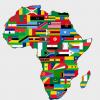Consumer knowledge on the destructiveness of palm oil production – found in everything from ice cream and crackers to detergents and cosmetics, is rising. Increased awareness is sorely needed, as more and more forests are cleared to make way for palm oil plantations.
There are a lot of questions around the use of palm oil. The Rainforest Action Network, which has been working on this issue for some time, has an excellent factsheet on palm oil, which is briefly excerpted here:
What is Palm Oil?
Palm oil is a globally-traded agricultural commodity that touches our lives in every trip we make to the supermarket. Palm oil is an edible vegetable oil derived from pulping the fruit of oil palms originally native to Africa. Palm oil is commonly used as a cooking oil in Africa, Southeast Asia and parts of Brazil and its consumption is on the rise worldwide. The recent rise in the use of palm oil in the U.S. food industry has resulted largely from changed labeling requirements that have caused a switch away from using trans fats.
Why is Palm Oil a Problem?
Palm oil has become one of the world’s leading causes of rainforest destruction. Unchecked expansion has pushed palm oil plantations into the heart of some of the world’s most culturally and biologically diverse ecosystems and palm oil is among the biggest threats driving iconic wildlife species like the Sumatran orangutan to the brink of extinction in Indonesia. This large-scale destruction of rainforests and carbon-rich peatland landscapes is releasing globally significant quantities of carbon pollution into the atmosphere, making palm oil a major global driver of human induced climate change. The production of palm oil is also responsible for widespread human rights violations as palm oil companies often forcefully remove Indigenous Peoples and rural communities from their lands.
Sign these petitions. It'll take 2 minutes.
















